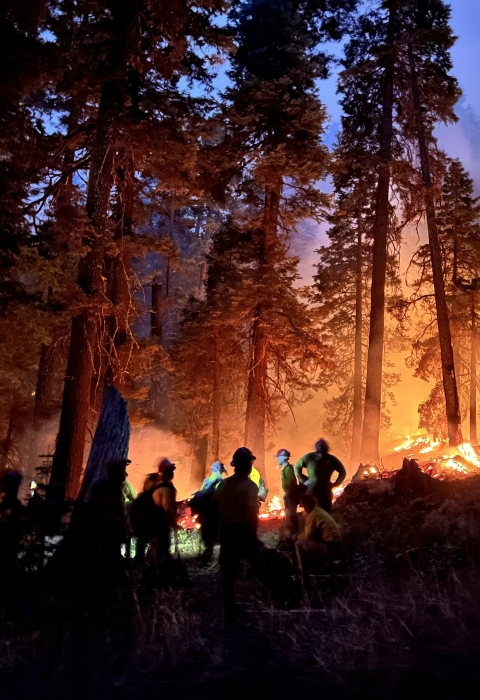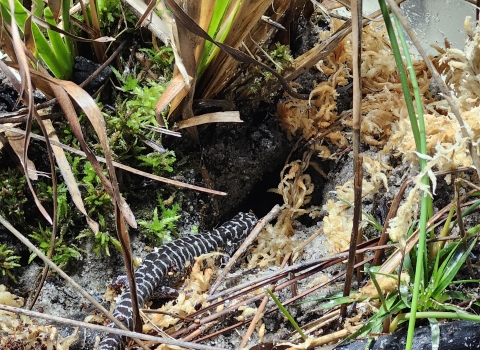In 2022, I was selected as one of 28 wildland firefighter apprentices for the U.S. Fish and Wildlife Service, the first class of apprentices for the agency.
I started my apprenticeship at Minnesota Valley National Wildlife Refuge in Bloomington, working on urban fuels treatments and prescribed burns. Soon after starting the program, I accepted a detail opportunity with the Redding Interagency Hotshot Crew (IHC) in northern California. Apprentices are provided detail opportunities in a variety of fire disciplines, such as helitack, fire use modules, rappel crews, dispatch, or engine crews.
I was grateful to detail with the Redding IHC, a development-focused Type 1 fire crew. Type 1 fire crews typically include firefighters who are highly skilled, have extensive training, advanced qualifications, and arduous physical standards and abilities. Fire personnel who are detailed to a crew like this at an early stage in their career gain experience and training that typically takes years to receive. When I showed up on my first day, I was as green as they come – but I soon learned so was everyone else. Each year, the crew starts fresh, other than overhead – every crewmember is new to the crew each year, creating an open and inclusive environment in which we learn from one another.
My detail lasted from April to mid-October, and we were on fires across the country up to three weeks at a time. We started the year with an intense training period that lasted six weeks and focused on small-unit leadership and building crew cohesion. Trainings were designed to teach us how to handle stress – the same type of stress we may experience while on an actual suppression assignment. The training prepares you for the physical and mental stress of the job. The physical challenges are expected when you’re a firefighter, but the mental challenges you encounter are something you can’t prepare for, including things like trying to be kind, respectful, and a good person on day 14 of an assignment when morale is low, tension is high, and the whole crew is exhausted.
Remaining flexible is essential on this developmental IHC. As a crewmember, I was assigned various roles throughout the year as a lead firefighter (providing crew direction), cutting on a saw team (responsible for cutting hazard tress and snags), as a lookout (keeping a watchful eye on overall fire activity) or part of the digging team (digging fireline). These shifting roles created constant change in leadership requiring the crew to adjust and adapt, just like in the ever-changing environment of wildfires.
The constant adjusting of roles on the crew allowed each crewmember non-typical experiences like supervision. Being exposed to different types of leadership roles was an incredible learning experience that made me realize how unique leadership can be from peer to peer.
My detail with the Redding IHC was life changing for me. From the beginning of the season to the end of the season, there was a lot of pressure, you’re working nonstop for months and months. Given the opportunity, I would do it all over again.
In addition to fire crew experience my first year in the Wildland Fire Apprenticeship Program, I got to experience lessons from two staff rides. The staff rides brought us to the Mendocino National Forest in California to study the incident that killed 15 firefighters in 1953 on the Rattlesnake Fire. Our second stop included a review of the South Canyon Fire in which 14 firefighters perished in Colorado in 1994. These staff rides taught me a lot about wildfires, LCES (Lookouts, Communication, Escape Routes, and Safety Zones), and navigating the human topography all before ever going on a wildfire.
For anyone out there considering applying to the apprenticeship program, my advice is not to be intimidated by all that the program has to offer. If you thrive on an active lifestyle, love challenge, have an appetite for learning, and have a passion for fire - the Wildland Fire Apprenticeship Program is for you.
The USFWS announces open apprentice positions throughout the year. Follow our Fire Management team on social media @USFWSFire on Facebook and Twitter to never miss an announcement.





